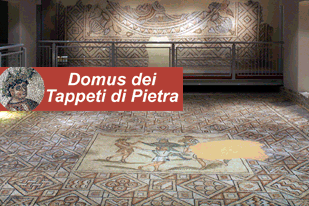Ravenna in the Papal era.

Ravenna, italy, in the Papal era. Hotels near the monuments of the Papal era in Ravenna.
On the return of Ravenna to the Pope after several years of terror under the Rasponi family (the massive buildings of which still instil terror in those walking down the streets of the city, the town remained under papal government for over three centuries.
The most important event in this long historic period was the major water reclamation scheme enacted: with the diversion of the rivers Ronco and Montone that surrounded the town around the walls and the formation of a new bed of the two newly joined rivers, down to the sea.
This operation was necessary in order to avoid the damage caused by the frequent bursting of the river banks that caused flooding (the floods of 1636 being particularly famous and commemorated by a small plaque that is still visible that indicates the water level).
A century after this flooding Cardinal Giulio Alberoni completed the re-unification of the two rivers, he had a new port built and began work of a canal to link Ravenna to the sea, a true umbilical cord which still maintains this ancient and vital union.
From an artistic point of view we can cite the renovation work undertaken on the Saint Giovanni Battista church undertaken in 1685 by the architect Pietro Grossi. The church houses a valuable collection of artworsk by Ravenna artists dating to the period between the XV and XVIII century; a Madonna by Nicolò Rondinelli (a famous 15th century painter who trained in Venice under Giovanni Bellini), two altar pieces by Francesco Longhi, son of Luca and brother of Barbara, a family of painters active in the 16th century, a Sant’Antonio Abate, of the early 17th century by Giovanni Barbiani, founder of a second family active in the period between the 17th and 18th centuries.
The Madonna with Child and five saints altar piece being the work of his son Giovan Battista; while the Madonna with saints Crispino and Crispiano, by Domenico Cignani dates back to 1771.
Finally, if we were to give a synthetic political assessment of the government of the associated cardinals we can say that it was neither particularly good or bad. However despite the situation of apparent calm the discontent of the masses continued to grow which soon found expression in the spread of the Carboneria, Freemasonry and Liberalist movements.
Prof. Gianni Morelli
Some of the Ravenna monuments dating back to the Pontificate era:
1) Piazza dell’ Aquila; 2) Suffragio; 3) S.Giovanni Battista (cosiddetto della Cipolla); 4) Scuole Pubbliche; 5) Palazzo Guiccioli; 6) Monastero di S. Vitale; 7) S. Eufemia e Santi Giovanni e Paolo; 8) Madonna del Torrione; 9) Piazza Duomo; 10) Palazzi Rasponi; 11) Palazzi Ginanni e Vitelloni; 12) Palazzo Baronio; 13) S. Maria Maddalena; 14) Palazzo Rasponi poi Bellenghi; 15) Palazzo Corradini; 16) Orfanotrofio della Misericordia; 17) Monastero di Classe; 18) Palazzi Lovatelli; 19) Porta Nuova; 20) Canale Corsini.
See the map on top and the articles in the Monuments section on the side
The pleasure of fine accommodation in the centre of Ravenna: we recommend the Fabbri hotels for a pleasant stay as follows:
The Centrale Byron hotel, 3-star hotel in the centre of Ravenna, near monuments Ravenna;
The Bisanzio, 4-star hotel in the centre of Ravenna, near monuments Ravenna;
Once you have reached the hotel and parked your car, forget it and walk everywhere, because everything is within walking distance.
The railway station is near our hotels and within walking distance.
© reserved copyright





